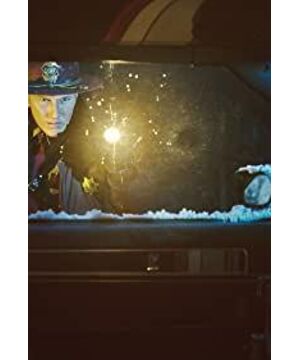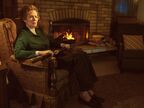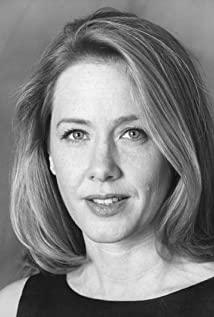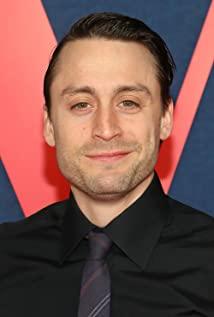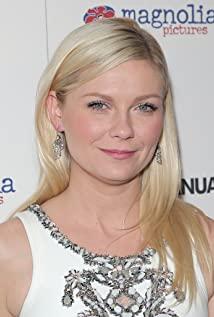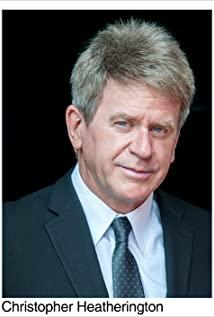Today, let's talk about the American drama "Frozen Season 2".
The film's title is Fargo Season 2 (2015), alias Snowflake High's Bizarre Murder (Hong Kong).
The story of "Frozen Season 2" takes place in Sioux Falls, South Dakota in 1979, and is regarded as a prequel to the first season.
The second season expands on the story of the Solversons, a family of policemen, while Molly Solverson, the heroine of the first season, was a little girl 27 years ago.
Ed is a butcher in the small town, and his wife Peggy works in the barber shop. The butcher wanted to take down the butcher shop and become his own boss and have another child, while Peggy wanted to learn the "Water of Life" course.
On the way home, Peggy bumps into a strange man, who unfortunately is Ray Gerhardt, the third son of the Sopranos who monopolizes local illegal activities. As the Gerhardt family grapples with an invading Kansas City mob, Ray's disappearance draws attention from both sides.
The town policeman Lou Sofferson traced the clues all the way, and gradually discovered that the gangster fire was not easy. Everyone is in a highly tense environment, only to expect the opponent to collapse before themselves.
Jesse Plemons (Ed Blumquist) and Kirsten Dunst (Peggy Blumquist), who play Ed and Peggy, play husband and wife on the show.
They also had a relationship in real life, got married and had a son, Ennis.
Much of the filming of Frozen Season 2 took place in Fort McLeod, Alberta, Canada.
In the play, the protagonist's office is reused many times. The insurance company that Lester worked for in the first season was Ed's butcher's shop in the second season.
This season, the Lifespring organization that Peggy is desperately eager to participate in is real in real life. The picture above is a screenshot of their "official website".
Lifespring was founded in the mid-1970s as an offshoot of the so-called "human potential" movement that began in the late 1960s.
Beginning in the late 1970s, dozens of people filed lawsuits against Lifespring, including fraudulent pyramid schemes that resulted in the death of participants, and the group disbanded in the mid-1990s.
The core idea of "Frozen Season 2" is Camus' existential philosophy.
Life is full of absurdity and irrationality, like Sisyphus pushing a rock, only to watch it repeatedly roll down every time.
The Gerhardt family and the Kansas City gang fought as hard as they could, only to get back to square one in the end.
Everyone is a meaningless life, and in the end, there is an indiscriminate death. Although these characters continue to shape themselves on their own basis and want to live a wonderful life, the results are the same. Just like that absurd UFO, after a whole season of tossing, it feels as absurd as a UFO.
Each episode of the show opens with a line of subtitles: "This is a true story. The events described in this film took place in Minnesota in 1979. At the request of the survivors, the name has been changed. Out of concern for the deceased Respect, the rest is told truthfully."
This is just an homage to the original 1996 film and isn't actually based on a true story.
The show's executive producer, Noah Hawley, also clarified in the interview, saying: "This show... is made up. The whole plot. I'm not looking for the real crime. It starts from a character perspective, from which everything develops organically.”
A total of three fictional films appeared in this season.
The first was the black-and-white "Massacre at Sioux Falls" film that appeared at the opening of Episode 1.
The second, "Moonbase Freedom," opened in a Fargo movie theater in 1951, where Otto and 12-year-old Dodd Gerhardt ambushed and assassinated rivals for local criminal domination . The actual play in the play is from Edgar G. Ummer's "The Man from Planet X" (1951).
The third was "Operation: Eagle's Nest" in episode 8, which Peggy watched on TV.
Peggy hits Ray and takes Ray home with it stuck in the windshield, based on the true case Gregory Glen Biggs case.
Gregory Glen Biggs was in Texas when he was hit by a drunk woman, Chante Mallard, and got stuck in his front windshield. Hours later, Gregory was dead in Chant Mallard's garage, and Chant Mallard found a friend to dispose of the body with him.
Chant Mallard testified that Gregory's life should have been saved if treated promptly, and was eventually sentenced to 50 years in prison.
The death toll was a record high this season, with 71 deaths compared to 43 in the first quarter.
The character Charlie Gerhardt suffers from cerebral palsy, as does his actor Allan Dobrescu.
The second season has a total of 10 episodes, continuing the fine tradition of the first season in the naming of subtitles.
The subtitle of each episode still contains the background of the philosophical story.
Episode 1 "Waiting for Dutch"
The title of the episode is based on Samuel Beckett's classic stage play Waiting for Godot (2001). Two homeless people are waiting for a man named Godot.
In the show's opening scene, an actor and director chat while waiting for Ronald Reagan, "Dutchman" by Reagan's nickname, on the set of his fictional western "The Sioux Falls Massacre." .
Episode 2 Before the Law
The title of this episode comes from Franz Kafka's "The Trial" (Le procès, 1962), which includes a story called "Before the Law". This story explains man's relationship to law and society in general.
Episode 3 The Myth of Sisyphus
The title of this episode comes from the philosophical work of the same name by the French writer and philosopher Albert Camus, The Myth of Sisyphus.
The book quotes the ancient Greek myth of Sisyphus to illustrate the absurdity of human life and how people should accept it.
Sisyphus offended the gods and was sentenced to push a boulder to the top of the mountain, and every time the boulder was about to reach the top, it would roll back to the bottom of the valley. Sisyphus had to repeat this process over and over again.
In this episode, the butcher shop girl Noreen reads the book titled The Myth of Sisyphus.
Episode 4 "Fear and Trembling"
The title of the episode comes from the philosophical book Fear and Tremors of the same name by the Danish philosopher Soren Aabye Kierkegaard.
Kierkegaard explains Abraham's decision to kill his son Isaac.
Episode 5 The Gift of the Magi
The title of the episode comes from O. Henry's Christmas short story "The Gift of the Maggie".
In the story, a young couple who have no money, sacrifice their most precious possessions to raise money in order to buy gifts for each other. Men sold pocket watches and bought combs for women, women sold their hair and bought chains for men.
The plot of the novel is the same as the plot of the play.
Episode 6 Rhinoceros
The title of this episode comes from the masterpiece "Rhino" by the Romanian-French playwright Eugène Ionesco.
The work describes an absurd adventure of Belangi, a young civil servant. Berenji is alone in the struggle against fate, unable to maintain his personality and spirit.
Episode 7 "Did You Do This? No, You Did It!" (Did you do it? No, you did it!)
The title of the episode comes from an anecdote from Picasso's famous anti-war painting "Guernica" during World War II.
During the Nazi occupation of Paris, a Gestapo officer broke into Picasso's apartment, pointed to "Guernica" and asked Picasso: "Did You Do This?"
Picasso replied: "No, You Did It!"
Episode 8 "Loplop" (Loplop)
The title of the episode comes from the name of a bird-shaped figure created by German artist Max Ernst.
Loprop first appeared in Ernst's collage novels La Femme 100 Têtes (La Femme 100 Têtes) and Une Semaine de Bonté (Women of Bonté), playing the roles of narrator and commentator, and is the author of developed alter ego.
Episode 9 "The Castle"
The title of this episode is the name of the second episode after Franz Kafka's novel.
"Castle" is Kafka's last novel, the protagonist K wants to change the identity of the outsider but suffers from many obstacles.
Episode 10 Palindrome (Palindrome)
The title of this episode heralds the end of the second season and the beginning of the first.
At the same time, several protagonists also returned to their original state at the end of the season. The Soffersons lie in bed, corresponding to the beginning of waiting for Holland; Ed dies in the freezer, corresponding to Ray Gerhardt's death and is stuffed into the freezer; Mike Milligan returns to Kansas City for orders, corresponding to the opening at the Kansas City was ordered; Hands recruited rookies at the end, corresponding to the fact that he was taken in by Gerhardt Sr. at the age of eight.
This also returns to the theme of this season - Camus' existential philosophy. All human efforts to resist are in vain, just like Sisyphus, it seems that he has paid a lot, but in fact it is fruitless. For example, Mike Milligan won a difficult battle with the Gerhardt family, returned to Kansas City and was still not valued, and was given a humble and worthless job.
Another biggest feature of this play is the many tributes to the works of the Coen brothers.
For example, this season's music "I Am A Man Of Constant Sorrow" pays homage to the Coen Brothers film "O Brother, Where Art Thou?" (2000). The song was sung by the fictional band The Soggy Bottom Boys.
The key scene in Episode 1 is the Waffle Shack.
The hut was also the setting for the Coen Brothers film The Ladykillers (2004).
"Old Woman Killer" star Tom Hanks is the father of season one actor Colin Hanks.
Judge Mundt is named in tribute to Karl "Madman" Mundt.
Karl Mutter is the name of the character John Goodman played in the Coen Brothers film Barton Fink (1991).
Judge Mutter told Ray the biblical story of Job, a tribute to the Coen Brothers film A Serious Man (2009). The background of the film is also set in the 1960s.
Lu asked how his wife was doing, and the wife replied, "Compared to what? Love Canal?" (Compared to what? Love Canal?)
No Country for Old Men, a tribute to the Coen brothers, when Carson Wells was asked about Chiger, he replied: "Compared to what? The Bubuonic Plague?"
In episode 2, Lou Sofferson heads to the butcher's shop and gets out of the car to see Mike Zoss Pharmacy across the street.
This drugstore is the name of the drugstore that was bombed in No Country for Old Men.
In this episode, Peggy rides home in Constance's car, which plays "Song of the Soul" by Cris Williams.
Chris Williams is a well-known lesbian folk singer and activist, and this episode shows Constance as a lesbian.
It's also a good indication that Constance always wanted to be alone with Peggy and went to Lifespring for a class, and also condoned Peggy stealing toilet paper from the beauty shop.
The shot of Ed pushing people back into the meat grinder is a tribute to the original film.
Gail Grimesluther grinds his legs on a lumberjack in the movie.
In episode 3, when Hank puts up a wanted poster at a beauty salon, he mentions that all of these people were killed "for what, A little bit of money."
It's the same thing Maggie said at the end of the movie version.
Charlie said of the Kansas City gang: "They didn't look like fellas who want to own half a car."
Here's a tribute to the line from the movie version, in which Carl says it, arguing about breaking up a car.
When Lu came to the typewriter shop to check, the lock on the front door was broken and fell to the ground.
It's a nod to No Country for Old Men, in which Tommy Lee Jones arrives at Llewellyn Moss' trailer and sees the door lock that Chag had previously broken with an air tank gun.
Hanzee's real name is mentioned for the first time in this episode, and his real name is "Ohanzee", shortened to "Hanzee", making it sound like "Hansi".
This is a derivation of "Hans" and "Johannes" and is associated with the German ancestor worship of the German-American Gerhardt gangster family.
The song that plays at the end of Episode 4 is "Down in the Willow Garden," an Appalachian ballad about a man who faces the death penalty for killing his lover.
The song was the soundtrack to the Coen Brothers film Raising Arizona (1987).
In addition, in this episode, Lue stays in front of the house late at night with a shotgun in hand, which is the same as what he did in the first season when he was old.
Ronald Reagan's speech in episode 5 is taken from his famous 1964 speech "Rendezvous with Destiny," which he gave in support of Senator Barry Goldwater's presidential bid.
Republicans were impressed with the speech, which helped Reagan be elected governor of California and president of the United States.
The title of the poem that Mike Milligan recites in episode 6 is "Jabberwocky", from "Alice in Wonderland".
Carr tries to block the door with a bench at the police station door, a nod to the Coen Brothers film The Big Lebowski (1998), which does the same thing.
And both times the roadblock was on the wrong side...
"Freedom, that terrible word..." by Mike Milligan in episode 7 is from Albert Camus' Rebels: An Essay on Human Revolt ( The Rebel: An essay on Man's revolt).
In a conversation with Lou Sofferson and Ben Schmidt in a hotel room, Mike Milligan mentioned an anecdote, saying, "Sometimes, there's a man." Murder Green Toe. This line appears several times in the film.
The phone booth where Ed calls at the end of the episode has an unfinished hanging game painted on the glass with "Sioux Falls" written on it.
This foreshadows the follow-up plot, where Ed almost died by hanging in the following plot.
Bear walks into the woods with his niece, who defends herself.
This scene pays homage to the Coen Brothers film Miller's Crossing (1990).
In episode 8, the gas station convenience store owner says Ed "going crazy up there at the lake." This line is a nod to the original movie.
In the film, the bartender stops the officer and tells the officer that a "little guy" is "going crazy by the lake."
In addition, the scene of Hands interacting with the owner of the convenience store at the gas station is a tribute to "No Country for Old Men".
In episode 10, Lou Sofferson puts Peggy in the back seat of a police car and asks her to talk about life and if it's worth it.
The scene pays homage to Marge Gundersson's conversation with Graer Grimsrud in the film version of Frozen, where Marge asks Gundersson for that little money And is it worth it to kill.
Lu's story describing the evacuation of helicopter pilots during the Vietnam War is a true event.
As detailed in the documentary Last Days in Vietnam (2014), the pilot at the time, named Ba Van Nguyen, threw his family from a helicopter before it crashed into the sea .
At the end of the episode, Heinz changed his face and gained a new identity.
He closes with his signature line: "Not catch, kill. Don't care about being guarded, don't care about doom, kill and be killed. Head in a bag. That's the message." (Not apprehend, dead. Don 't care heavily-guarded. Don't care into the sea. Kill and be killed. Head in a bag. There's the message.) In the first season, Mr. Tripoli, the black boss, said the same lines.
The two boys playing baseball that Hands watches at the end of the episode are Mr. Wrench and Mr. Numbers from season one.
The two children were playing catch and arguing, one was short and dark-haired, the other tall and red-haired.
Existence is reasonable but meaningless,
Changing the soup without changing the medicine is a waste of work.
This is the distribution center for hardcore movie fans, welcome to pay attention to the public number: Miaokan Film and Television
View more about Waiting for Dutch reviews


